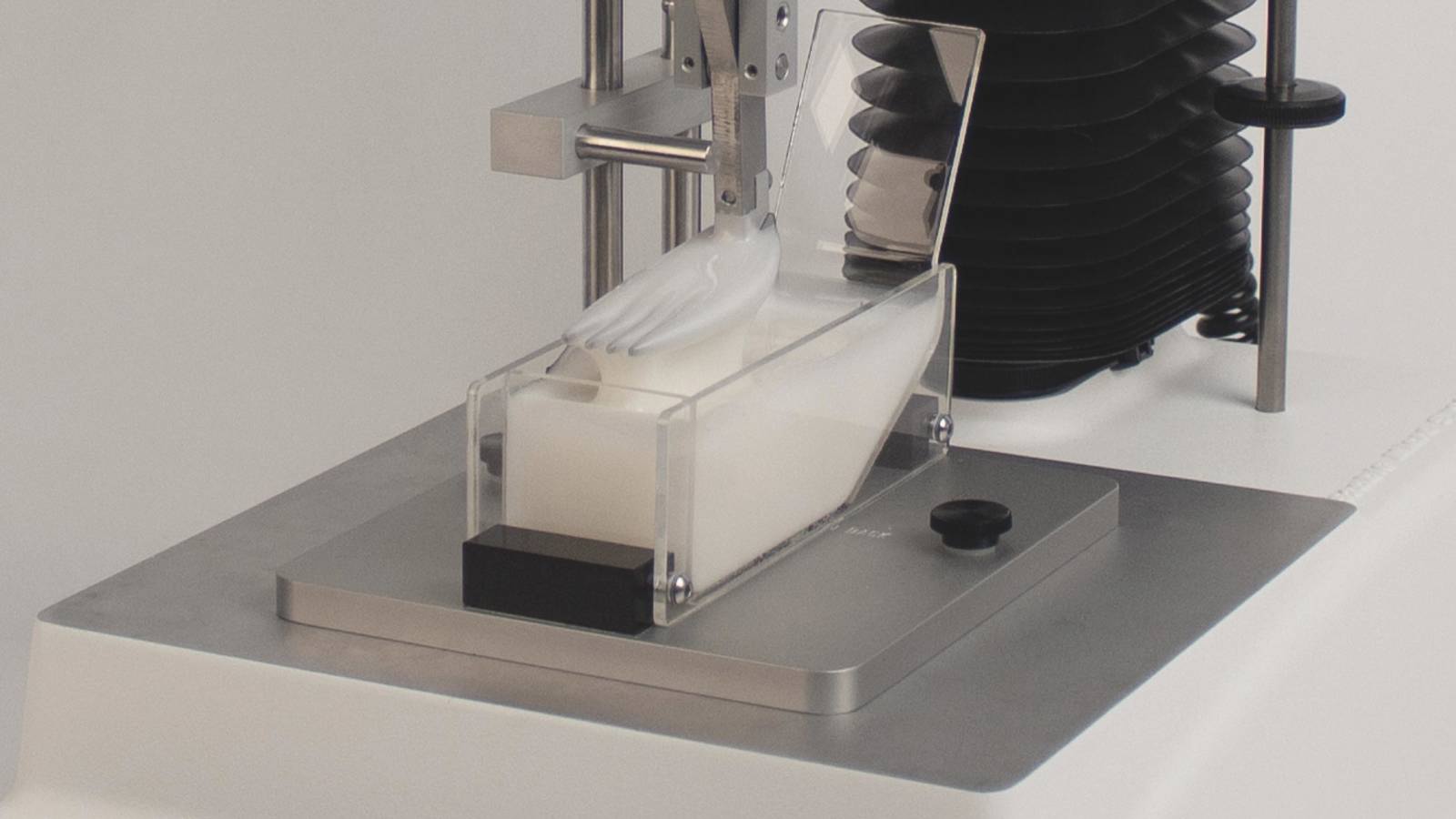
The use of texture analysis in developing food for the elderly

In the innovative landscape of food technology, a significant stride has been made in catering to the nutritional needs of the ageing population, particularly those affected by dysphagia. Central to this advancement is the Stable Micro System Texture Analyser, a pivotal tool in developing food products with suitable texture and consistency. This device's capabilities are now complemented by a group of imitatative methods according to the manual methods of the International Dysphagia Diet Standardisation Initiative (IDDSI), which provides a standardised framework for texture-modified foods and thickened fluids.
The role of IDDSI in dysphagia care
IDDSI has already established a universally recognised standard, offering a range of texture descriptions (Level 0 to Level 7). While these guidelines are invaluable, their manual testing methods have traditionally been qualitative and subjective, primarily designed for use by care workers rather than in food manufacturing for quality control.
Bridging the gap: Imitative instrumental methods
To overcome this limitation, instrumental methods mimicking manual IDDSI techniques have been developed. These quantitative procedures align closely with IDDSI levels, offering an objective framework. The Texture Analyser plays a crucial role here, with methodologies tailored for each category (Levels 3–7), using WIPO protected designs of attachments that fit onto a Texture Analyser. These include:
- Fork pressure test
- Fork drip test
- Fork cut test
- Spoon pressure test
- Spoon tilt test
By employing these instrumental methods, we can eliminate errors inherent in subjective manual testing. The Texture Analyser ensures consistent, accurate testing with automated analysis and IDDSI grading, presented in a user-friendly spreadsheet format. This standardisation not only facilitates faster sample processing but also enables shared methodologies across different testing sites for comparative analysis.
To find out more about how each of these tests work and testing foods for dysphagia, watch the video below, visit our IDDSI page or request a brochure.
Discoveries and future directions
As we continue to explore the potentials of these technologies, the future looks promising. The combination of the Texture Analyser and IDDSI methods opens new avenues in food science, ensuring that our ageing population enjoys a higher quality of life through better nutrition and safer eating experiences.
Discover what published work has already used a Texture Analyser for dysphagia research using IDDSI frameworks and the development of texture-modified foods.
Alongside the integration of IDDSI Imitative methods the Texture Analyser is also being used in research more generally for the development of food for the elderly. View a Google search round-up of recent examples.
You might also be interested in a recent article ‘3D printed food proposed as meal substitute for aged care residents’. According to CSIRO, 3D printing technology’s precision in layering allows accurate control over calorie and nutrition intake in each layer. This means 3D printing “could be used to prepare on-demand foods of customised texture and nutrient loading.” They also note that “food printing is particularly suited to niche food applications, for example, personalised nutrition and texture-modified foods for people with dysphagia”.








